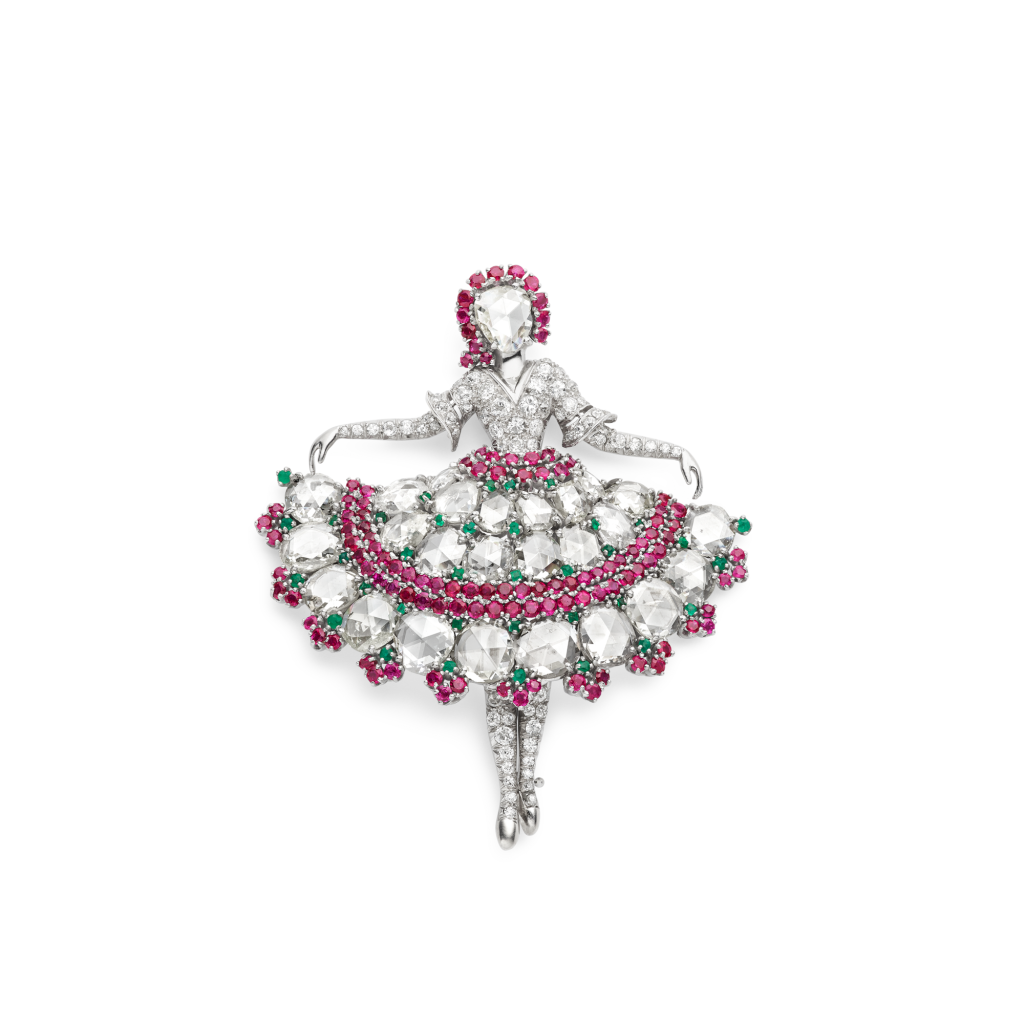
Lace clip
Creation details
- Creation year 1943
- Stone Diamond
- Material Gold
- Usage Clip
- Dimensions 64 mm
This Lace clip depicts the outline and folds of a cockade in yellow gold, illustrating the way in which the jewelry arts borrowed motifs from clothing during the Second World War.
In this piece, the metal imitates the openwork structure of scallop-edged lace, dotted with closed-set round diamonds. The fine mesh is scattered with stylized floral motifs. The composition unfurls around a dome-shaped heart of claw-set round diamonds.
The repercé technique
The use of the lace motif hints at the fluidity of fabric with its irregular contours. Since the 1930s, driven by the Modernist movement, precious metal jewelry had undergone a revival, and metal, notably yellow gold, was particularly appreciated for its own qualities without the use of any stones. Numerous experiments with precious metals were carried out to find a way of imitating woven textiles, among other things. The repercé (lit. re-drilled) technique was perfect for achieving this effect. It consists of creating openwork in metal plates using a fretsaw to cut the material with precision to produce checkered structures. The first piece using this technique was a “jabot” clip dating from June 1939. Numerous ribbons ensued, creating an extensive repertory of arabesques and floral ornaments, as well as cockades, known as “rosette motifs,” with varying numbers of folds depending on the models. These ribbons are also found in the Bouquets clips, providing fluidity and volume.
BOUQUET CLIPS KNOTTED WITH RIBBONS

Jewelry becomes decorative
“The ‘noble’ brother of a bed of sequins or carved buttons” to the point of adopting their form, “jewelry is no longer that ostentatious sign of wealth that was worn even though it did not go with the dress; it has become the elegant accessory that is […] attached to the dress […] because of its decorative qualities.”1Anonymous, “Points de mire,” Silhouette (1947): n.p. The resurgence of a rich, figurative vocabulary in the jewelry arts in the early 1940s coincided with the return of a degree of ornamental opulence in fashion, “compensating for the temporary deficiency of fabrics.”2Anonymous, “En détails…,” Album du Figaro (Spring 1945): 144–145. “The spirit of creativity […] has inspired couturiers [to produce] a thousand and one embellishments which, […] this year, adorn coats and dresses.” “Bead and sequin embroidery, fanciful appliqués”3Anonymous, “Recherches dans le détail,” Album du Figaro (Autumn 1943): 81–84. on fabric, “chenille, whimsical velvet ribbons, laces, braid, in a word, all manner of trimmings [are used to highlight] pockets, shoulders, fronts of blouses, waistlines, and lapels.”4Anonymous, “Les détails dans la couture…,” Album du Figaro (Winter 1942–1943): 66–67. Drawing on its skillful use of the art of illusion, the jewelry designed during the Second World War provided a rich repertory of forms and ornaments to counter the material constraints of the Occupation.
To go deeper











